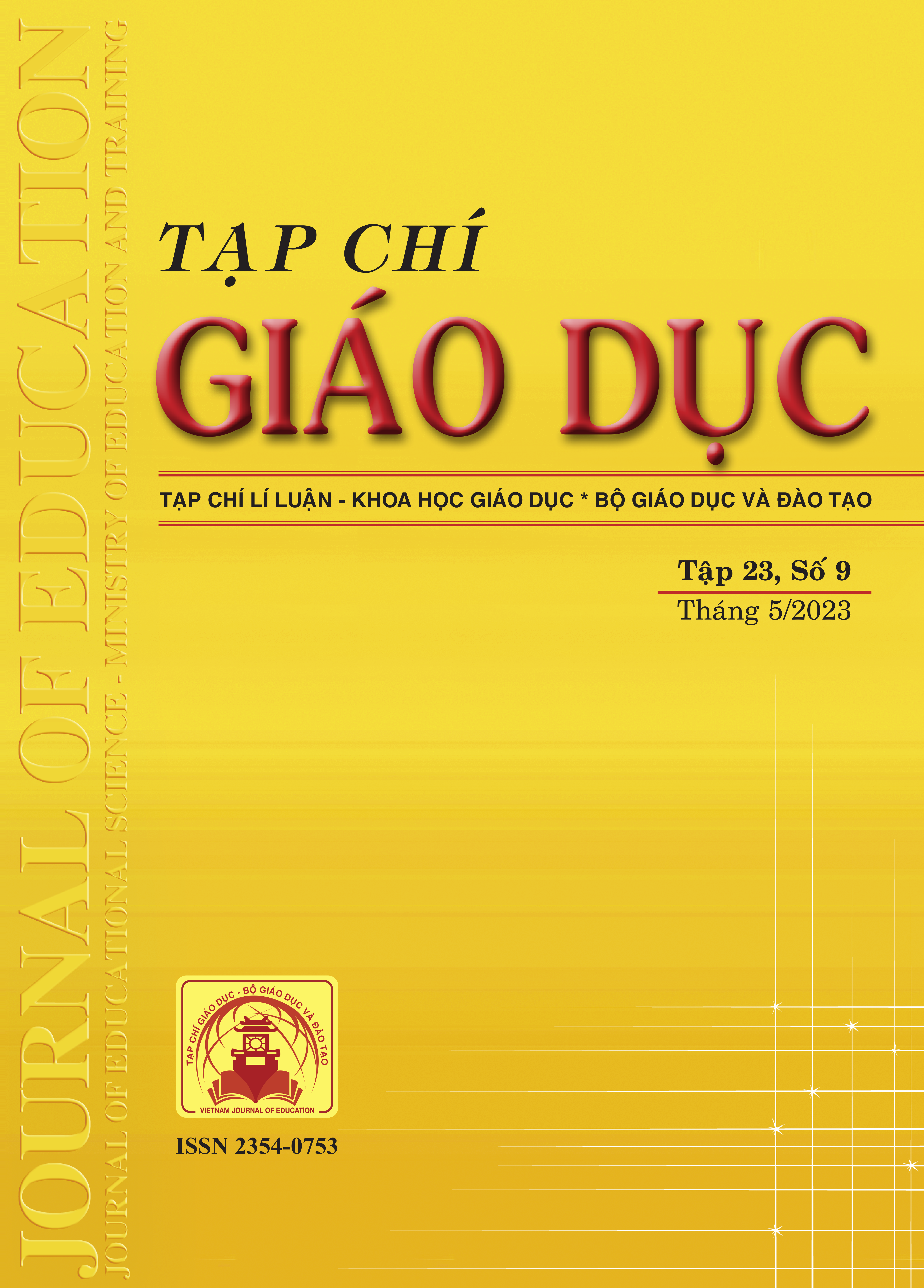Tổng quan những nghiên cứu về bộ công cụ đánh giá hiệu quả hoạt động giáo dục môi trường trong nhà trường
Tóm tắt
In research, data can be collected using many different toolkits. School education programs are generally aimed at high efficiency. However, in practice, the effectiveness of the program can be achieved at different levels and the problem is to evaluate the effectiveness of those programs. Within the scope of the article, we review the studies on the toolkit to evaluate the effectiveness of environmental protection education in schools; from there, managers and researchers would have a more comprehensive picture for devising policies and tools to evaluate the effectiveness of environmental protection education activities in schools in Vietnam. Recommendations to consider include: (1) Teachers use data and evidence to continuously assess student progress across lessons effectively; (2) Principals regularly plan, coordinate, and evaluate effective instruction and curriculum use with the systematic use of assessment data; (3) The education system engages all staff and students in the school to self-assess effectively so that programs and policies can be adjusted to maximize educational outcomes.
Tài liệu tham khảo
Bailey, K. D. (1994). Methods of social research. New York: Free Press.
Berg, B. L. (1998). Qualitative research methods for the social sciences. Boston: Allyn and Bacon.
Berkowitz, W. R. (1982). Community impact. Cambridge, MA: Schenkman.
Chekki, D. A., & Sanders, J. T. (1980). Community development: Theory and method of planned change. New Delhi: Vikas Publishing.
Cooper, J. O., Heron, T. E., & Heward, W. L. (1987). Applied behavior analysis. New York: Macmillan.
DiEnno, C. M., & Hilton, S. C. (2014). High School Students’ Knowledge, Attitudes, and Levels of Enjoyment of an Environmental Education Unit on Nonnative Plants. The Journal of Environmental Education, 37(1), 13-25. https://doi.org/10.3200/JOEE.37.1.13-26
Esteban Ibáñez, M., Lucena Cid, I. V., Amador Muñoz, L. V., & Mateos Claros, F. (2020). Environmental education, an essential instrument to implement the sustainable development goals in the university context. Sustainability, 12(19), 7883. https://doi.org/10.3390/su12197883
Fawcett, S. B., Paine-Andrews, A., Francisco, V. T., Schultz, J. A., Richter, K. P., Lewis, R. K., Williams, E. L., Harris, K. J., Berkley, J. Y., Fisher, J. L., & Lopez, C. M. (1994). Work group evaluation handbook: Evaluating and supporting community initiatives for health and development. Lawrence: Work Group on Health Promotion and Community Development, University of Kansas.
Force, F. A. T. (2013). Methodology: For Assessing Technical Compliance with the FATF Recommendations and the Effectiveness of AML/CFT Systems. FATF/OECD.
Hu, M. (2017). Assessment of effective energy retrofit strategies and related impact on indoor environmental quality: A case study of an elementary school in the state of Maryland. Journal of Green Building, 12(2), 38-55. https://doi.org/10.3992/1943-4618.12.2.38
Jinliang, W., Yunyan, H., Ya, L., Xiang, H., Xiafei, W., & Yuanmei, J. (2004). An analysis of environmental awareness and environmental education for primary school and high school students in Kunming. Chinese Education & Society, 37(4), 24-31.
Martin, G., & Pear, J. (1992). Behavior modification: What it is and how to do it. Eaglewood Cliffs, NJ: Prentice-Hall.
Moody, D. L., & Sindre, G. (2003). Evaluating the effectiveness of learning interventions: An information systems case study. ECIS 2003 Proceedings.
Neuber, K. A., Jacobson, J. A., & Reteurman, N. A. (1980). Needs assessment: A model for community planning. Beverly Hills. CA: Sage.
OECD (2013). Synergies for better learning: An international perspective on evaluation and assessment. OECD Publishing, Paris.
Robinson, V., Lloyd, C., & Rowe, K. (2008). The impact of leadership on student outcomes: An analysis of the differential effects of leadership types. Educational Administration Quarterly, 44(5), 635-674. https://doi.org/10.1177/0013161X08321509
Simmons, B. (2014). Excellence in Environmental Education for Elementary and Secondary Schools in the United States. In: Lee, J. K., Efird, R. (eds) Schooling for Sustainable Development Across the Pacific. Schooling for Sustainable Development, 5. Springer, Dordrecht. https://doi.org/10.1007/978-94-017-8866-3_4
Timperley, H., & Parr, J. (2009). Chain of Influence from policy to practice in the New Zealand literacy strategy. Research Papers in Education, 24(2), 135-154. https://doi.org/10.1080/02671520902867077
UNESCO (1980). Environmental education in the light of the Tbilisi Conference. Paris: UNESCO.
UNESCO (2020). Education for Sustainable Development - A roadmap. France: UNESCO.
Yen, H.-W., Ferng, J.-Y., & Liu, C.-H. (2006). The construction of school environmental education indicator system in Taiwan. Journal of Taiwan Normal University: Education, 51(1), 85-102.
Tải xuống
Đã Xuất bản
Cách trích dẫn
Số
Chuyên mục
Giấy phép

Tác phẩm này được cấp phép theo Ghi nhận tác giả của Creative Commons Giấy phép quốc tế 4.0 .












